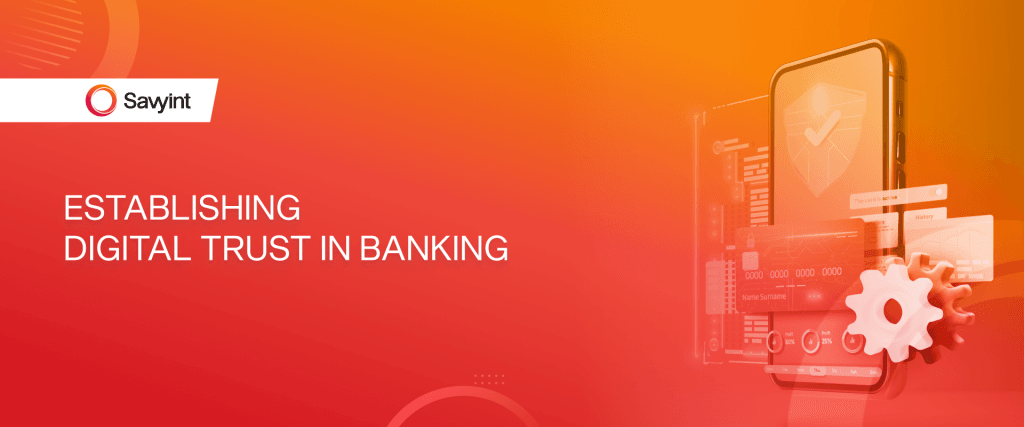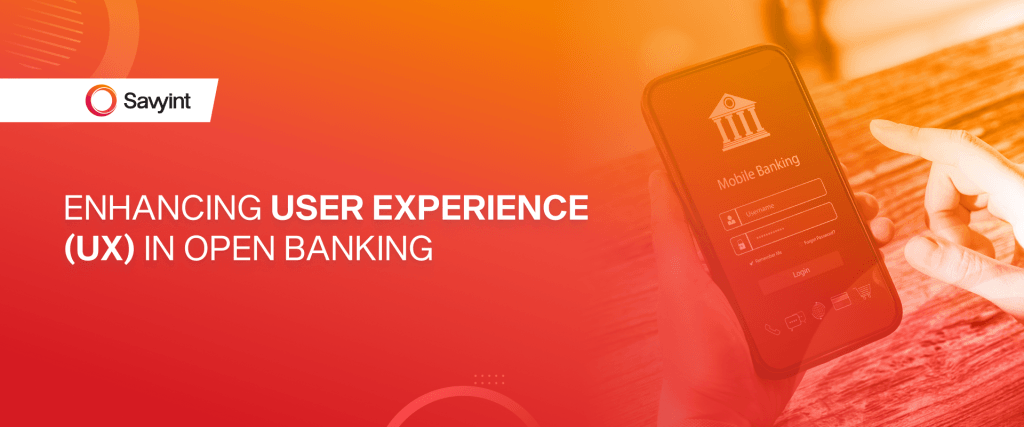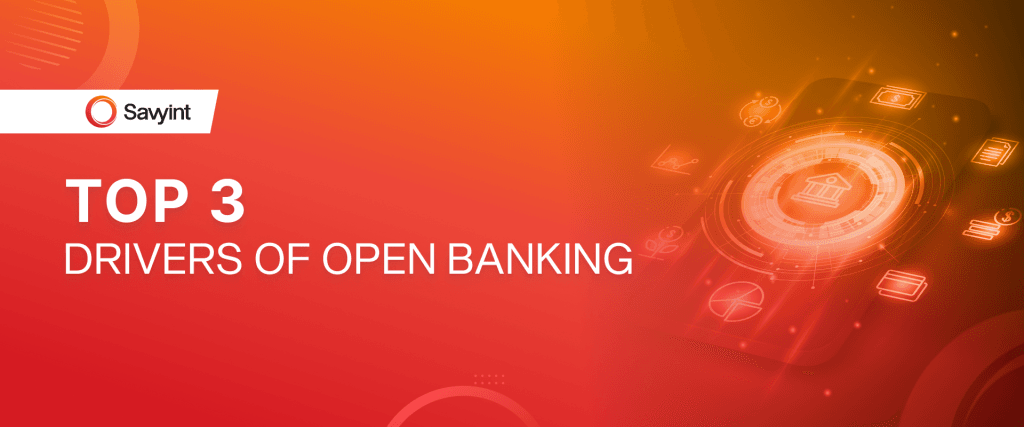Savyint Officially Launches Open Banking Tech Stack, Driving Open and Inclusive Finance Ecosystems

Savyint has officially announced the launch of its Open Banking Tech Stack, marking a significant milestone in the journey of building an open and inclusive financial ecosystem in Vietnam and across the region. As the global financial industry undergoes a strong transformation towards open finance models, implementing open banking is no longer just a trend but a strategic imperative for financial institutions to maintain competitiveness. The growing demand for connectivity between financial ecosystems – including banks, enterprises, and end-users – requires an infrastructure that not only complies strictly with regulatory frameworks but also ensures the highest level of data security and privacy. With this vision, Savyint introduces the Open Banking Tech Stack – a comprehensive solution designed to help banks, financial institutions, and enterprises accelerate digital transformation, foster innovation, and contribute to shaping an open and inclusive financial ecosystem. Open Banking Tech Stack – Bridging Technology and Compliance The Open Banking Tech Stack is designed to strictly meet both regulatory and technological requirements, enabling banks and financial institutions to enhance connectivity, collaboration, and innovation within a globally integrated system. Key Advantages of the Open Banking Tech Stack: The Open Banking Tech Stack equips organizations with a complete set of tools to implement a modern open banking system, including: In addition, the Tech Stack integrates seamlessly with secure online payment gateways, creating a complete end-to-end process for banks and third-party providers – from registration, identification, authentication, integration, and data sharing to payments. Strategic Partnerships with Global Technology Leaders Savyint’s Open Banking Tech Stack is built on strategic collaborations with world-leading names in Open API and Open Banking, including Red Hat, Axway, Tyk.IO, Kong, Curity, Salt Group, IBM, Google Cloud, Gravitee, Fiorano, and Open Banking Exchange. Through these partnerships, Savyint not only delivers cutting-edge technology solutions but also provides customized adaptability to meet the specific needs of each market – ensuring reliability, optimal security, and exceptional scalability. The Open Banking Tech Stack is expected to break down traditional barriers, enabling intelligent data sharing and close collaboration among stakeholders. This fosters healthy competition, drives innovation, and lays the foundation for a new era of inclusive finance. Don’t stand outside the open banking movement, connect with Savyint experts TODAY!
SAVYINT is an Official Member of the Quantum Technology Network and Innovation and Cybersecurity Development Network

On August 25, at the Launch Ceremony of three Strategic Technology Innovation Networks organized by the Ministry of Finance, under the chairmanship of Deputy Prime Minister Nguyen Chi Dung, SAVYINT, as an official member of two out of three networks, introduced its Cybersecurity and Information Security Solution System, featuring two core components: PQC Lab – Vietnam’s first post quantum cryptography platform – and SAM Auth Server. To realize the objectives outlined in Resolution No. 57-NQ/TW dated December 22, 2024, by the Politburo, and Decision No. 1131/QĐ-TTg dated June 12, 2025, by the Prime Minister, the Ministry of Finance tasked the National Innovation Center (NIC) with collaborating with experts, scientists, and businesses to establish Strategic Technology Innovation Networks. Under the leadership of Deputy Prime Minister Nguyen Chi Dung, the Ministry of Finance organized the launch of three Innovation Networks, with key highlights: During the ceremony, Deputy Prime Minister Nguyen Chi Dung emphasized that Vietnam is entering a new development phase and must proactively seize the immense opportunities brought by the Fourth Industrial Revolution. The three Strategic Technology Innovation and Expert Networks will work alongside the Government, ministries, and businesses to shape strategies, develop policies, and promote research, development, and application of new technologies, transforming the country’s “challenges” into “great opportunities” for the future. SAVYINT is an official member of both the Quantum Technology Network and the Cybersecurity Innovation and Development Network. With over 20 years of research and experience, SAVYINT aims to serve as a catalyst, driving the growth of these alliances and their respective fields in Vietnam. At the event, SAVYINT unveiled its comprehensive Cybersecurity and Information Security Solution System, with SAM Auth Server and PQC Lab – Vietnam’s first post quantum cryptography platform for digital signatures, PKI, blockchain, and data encryption – garnering significant attention from attendees. Pioneering Post-Quantum Technology with SAVYINT PQC Lab As quantum technology advances rapidly, traditional encryption methods face the risk of being compromised. SAVYINT PQC Lab was developed to pioneer the application of posy-quantum technologies and algorithms, safeguarding digital signature systems, PKI, blockchain, and data encryption against threats from quantum computers. This platform not only meets current security requirements but also prepares for the future when quantum technology becomes widespread. It enables organizations to adopt NIST-approved Post-Quantum Cryptography (PQC) algorithms, test compatibility, performance, and impacts of PQC without affecting existing infrastructure or systems. This is particularly critical for financial and fintech organizations that must comply with international standards such as FIDO2, PSD2, eIDAS, and PCI DSS. SAVYINT PQC Lab utilizes Hardware Security Modules (HSMs) supporting NIST-standard PQC algorithms: ML-KEM (FIPS-203), ML-DSA (FIPS-204), and SLH-DSA (FIPS-205). It manages and automates the issuance of PQC digital certificates, scans and alerts for certificates requiring replacement per NIST and new security standards, and provides a flexible and secure sandbox environment for rapid testing, isolated from operational systems. With SAVYINT PQC Lab, businesses and organizations can ensure long-term data protection, prevent “Harvest Now, Decrypt Later” attacks, comply with NIST’s PQC standards, and adhere to the highest global data security regulations. This builds customer trust, enhances global competitiveness, and solidifies leadership in cybersecurity. SAM Auth Server – All-in-One Identity, Authentication and Security Solution SAM Auth Server is an all-in-one identity, authentication, and security solution developed by SAVYINT, leveraging advanced security technologies to address the growing complexity of securing information in digital environments. SAM Auth Server offers multi-layer authentication and security, integrating dedicated hardware and software, as well as smart biometric cards, while strictly adhering to domestic and international security standards such as FIPS 140-3, eIDAS, PSD2/PSD3, GDPR, FIDO2, and OIDC/OAuth2. It is a pioneering solution that applies Post-Quantum Cryptography (PQC) algorithms and tokenization technology, ensuring absolute security for data and transactions amid increasingly sophisticated cyber threats. With rapid integration, independent operation, and unlimited scalability, SAM Auth Server enables organizations and businesses to proactively manage digital identities, protect systems, data, and critical digital content, while optimizing costs, enhancing efficiency, and ensuring security across all digital operations. Comprehensive Cybersecurity and Information Security Ecosystem In addition, SAVYINT introduced a comprehensive Cybersecurity and Information Security Solution System designed to meet the diverse needs of organizations and businesses in protecting sensitive information, ensuring data security, and complying with international regulations. This system includes a range of standout solutions: The application of advanced cybersecurity and information security technologies serves as a robust shield for organizations and businesses in the digital era. Contact us today to start preparing for a sustainable and secure digital future. Event highlights:
Savyint launches the first PQC Lab in Vietnam, pioneering the post-quantum security era

Savyint officially announces the Savyint PQC Lab – the first post-quantum cryptography (PQC) security platform in Vietnam dedicated to digital signature, PKI, cryptography infrastructure, and data encryption solutions. Post-Quantum Security – No Time to Delay With the rapid rise of technology, quantum computers are approaching the ability to break traditional cryptographic algorithms such as RSA and ECC, which have safeguarded global data for decades. To counter this challenge, Post-Quantum Cryptography (PQC) has emerged, leveraging entirely new and complex mathematical problems, such as code-based, lattice-based, hash-based methods, and others, to ensure resilience against both classical and quantum computers. Recognizing the serious threat quantum computing poses to current security systems, in 2024, the U.S. National Institute of Standards and Technology (NIST) announced the first three standardized PQC algorithms to ensure proper adoption of new cryptography: ML-KEM (FIPS-203), ML-DSA (FIPS-204), and SLH-DSA (FIPS-205). NIST also published a roadmap: starting in 2030, classical algorithms such as RSA-2048 and ECC-256 will begin to be phased out, and by 2035, they will be fully retired. This means that organizations and enterprises worldwide must develop roadmaps to adapt and transition their security infrastructures to PQC algorithms, in order to defend against financial data breaches via “Harvest Now, Decrypt Later” attacks. Moreover, implementing PQC standards is a complex process that may take 5–10 years, requiring organizations to prepare not only in terms of technical infrastructure, but also through long-term strategy, workforce training, and safe sandbox testing before large-scale adoption. Therefore, preparing today is the foundation for organizations to proactively defend against attacks targeting sensitive data and to build a sustainable security ecosystem for the post-quantum era. Savyint officially launches the first PQC Lab in Vietnam As an international technology group with extensive expertise in PKI, cryptography, blockchain, digital identity, electronic authentication, and open banking/finance, Savyint proudly introduces the Savyint PQC Lab – the first post-quantum security lab in Vietnam, dedicated to digital signature, PKI, blockchain, and advanced cryptography solutions. The Lab provides a testing environment that enables organizations to familiarize themselves with NIST-approved PQC algorithms, while evaluating compatibility, performance, and impact – without disrupting existing infrastructure or operational systems. This is particularly vital for financial institutions and fintech companies that must ensure compliance with international standards such as FIDO2, PSD2, eIDAS, and PCI DSS. Key features of Savyint PQC Lab: Mr. Steve Hoang, CTO & Chairman of Savyint Group, emphasized: “Transitioning to PQC is a 5–10-year journey that demands strategic vision and persistent execution. The Savyint PQC Lab is the tool that enables enterprises to embark on this journey safely, swiftly, and proactively.” Currently, Savyint is collaborating with leading global technology and security partners such as Entrust, Kryptus, and FutureX to develop large-scale quantum-safe solutions applicable to critical sectors, including PKI and digital certificates, data security, network and telecommunications infrastructure, and industrial and defense applications. The launch of the Savyint PQC Lab is not only a technological milestone but also a bold statement of Savyint’s pioneering role in the post-quantum era, partnering with global enterprises to build a secure, sustainable, and trustworthy digital future.
Security in Online Payments in the New Era

Online payments have rapidly become a preferred payment method in many countries worldwide. Alongside this trend, the demand for authentication and security has never been higher, aiming to protect transactions from increasingly sophisticated threats, ensure absolute safety, and maintain a seamless user experience. Over the past decade, the world has witnessed a powerful surge in e-commerce, smartphones, and high-speed connectivity infrastructure. Cashless payment habits have become an integral part of daily life. Bank cards, digital wallets, Apple Pay, Google Pay, QR codes, and cross-border payment platforms like Alipay+, WeChat Pay (China), and UPI (India) are used daily by millions for shopping, bill payments, and personal financial transactions. However, alongside this growth comes a downside: increasingly sophisticated cyberattacks. Cybersecurity reports highlight a significant rise in advanced attack methods, from phishing scams and malware on mobile devices to OTP theft, creating an urgent need for financial service providers, banks, and payment organizations to enhance authentication and transaction security measures. Popular Authentication Methods Today Currently, many countries employ Multi-Factor Authentication (MFA), which applies at least two of three factors: Something you have (e.g., a device or OTP), Something you know (e.g., a password or PIN), and Something you are (e.g., biometric data like fingerprints, facial recognition, or iris scans). For example, in India, the Reserve Bank of India (RBI) mandates two-factor authentication (2FA) for all online transactions, typically combining OTP with a PIN. In the UAE, OTPs delivered via SMS or email are a common authentication method for financial transactions. However, OTPs and PINs are increasingly vulnerable, becoming prime targets for cyberattacks, paving the way for new, more secure, and efficient authentication trends. Trends in Online Payment Security Biometrics is considered a significant advancement in authentication security today. When a user registers, their device generates a pair of security keys: a private key stored on the device, unlocked only through biometric authentication, and a public key stored on the payment network. During a transaction, the device signs the request with the private key, the network verifies it with the public key, and the result is sent to the bank. This process shifts authentication from the bank to the payment network or a third party, reducing the risk of OTP theft and providing a smoother user experience. In addition to biometrics, securing payment applications on mobile devices is another critical piece of the security puzzle. For instance, Google Play Protect, Android’s default security layer, can scan apps and detect known malware at the operating system level. However, it lacks the ability to identify sophisticated in-app fraud, such as fake keyboards, unauthorized access, or zero-day attacks. Advanced app-level security solutions enable real-time detection and response to threats, from blocking suspicious transactions to adjusting security policies based on the usage environment. As online payments continue to thrive, biometrics and mobile payment protection technologies are emerging as inevitable trends, strengthening transaction security, reducing cyber risks, and delivering a seamless, reliable payment experience. This marks a significant step toward a future where every online transaction is comprehensively protected, providing absolute peace of mind for both users and businesses. Savyint – Setting New Standards for Strong Authentication and Payment Security Amid increasingly stringent requirements for payment security and user authentication, Savyint—a global technology company specializing in open banking, data security, and advanced security solutions—is ready to deliver authentication and payment security solutions that meet rigorous national and international standards. With a focus on passwordless strong authentication (Passwordless FIDO2, PKI Passwordless, SmartOTP Passwordless), Savyint builds a comprehensive, easily integrated ecosystem of solutions, enabling financial institutions, fintech companies, and service providers to optimize user experience while meeting international standards. These include: All solutions are designed to strictly comply with international standards such as FIDO2, PSD2, eIDAS, GDPR, and PCI DSS, offering rapid deployment, compatibility with existing infrastructure, and the highest level of security. Connect with Savyint’s experts today to start building a secure payment ecosystem
Tourist e-Wallet and Digital Dirham: Great Potential but Significant Challenges

To meet the operational demands of the digital economy and enhance the efficiency of payment systems, the Central Bank of the UAE (CBUAE) has introduced the national digital currency, the Digital Dirham. Recently, the CBUAE discussed four potential use cases for the Digital Dirham, with the development of an electronic wallet for tourists being a particularly prominent topic. The CBUAE recently released the Digital Dirham Primer, a policy report outlining the design principles, policy framework, and initial development steps for the Digital Dirham. In addition to highlighting benefits, challenges, and implementation processes, the report details four use cases for the digital currency, including: Among these, the concept of an electronic travel wallet for tourists has garnered significant attention, given that the UAE attracts millions of international visitors annually, who collectively spend vast amounts on accommodation, shopping, dining, and entertainment. Theoretically, even if just 10% of tourism spending shifts to the Digital Dirham wallet, it could create a substantial economic impact and promote the adoption of the digital national currency. However, launching a tourist e-wallet is not as simple as introducing it to the market and expecting adoption. Most tourists in the UAE rely on Apple Pay, Google Pay, international credit/debit cards, or digital wallets from their home countries, such as UPI (India) or Alipay and WeChat Pay (China). For tourists to adopt a new payment method like the Digital Dirham, it must offer superior value and address inconveniences that existing infrastructure fails to resolve. Key considerations include: The electronic travel wallet scenario is a complex challenge involving multiple factors, including user experience, cost, widespread payment acceptance across various locations, and integration with diverse payment methods. If these elements are effectively addressed, capturing 10% of the tourism spending market share is entirely feasible. Banks and wallet developers must carefully strategize to turn this potential into tangible success.
UAE’s Payment Authentication Revolution: The End of SMS OTP

On July 25, 2025, the Central Bank of the UAE (CBUAE) issued a landmark directive mandating all UAE banks to phase out SMS and email OTPs by March 2026. This pivotal move signals a major overhaul of the payment infrastructure, aiming to standardize in-app biometric authentication across the entire banking ecosystem. For years, SMS and email OTPs have been the go-to method for authenticating financial transactions. However, this approach has increasingly revealed vulnerabilities, including OTP leaks and delays due to inconsistent telecommunications infrastructure. Globally, fraud related to SMS OTPs caused a staggering $6.7 billion in losses in 2021. In the UAE alone, scams surged by 43% year-on-year, impacting over 40,000 individuals in 2023, making SMS OTPs an easy target for cybercriminals. To mitigate risks and enhance the user experience in payments and transactions, the CBUAE has directed the banking sector to adopt safer and more advanced authentication mechanisms integrated into mobile banking applications. The directive mandates all UAE banks to: This means that within the first eight months of implementation, financial institutions must develop a transition roadmap, test, and roll out new authentication systems to fully replace traditional OTPs. Users will no longer receive OTPs via SMS or email; instead, they will approve transactions directly within banking apps using fingerprints, facial recognition, or push notifications. This shift reduces transaction latency, enhances user experience, and strengthens security. Currently, banks like Emirates NBD and ADIB have already adopted biometric login and soft tokens, while many others still rely on traditional OTPs and must urgently upgrade before the deadline. This bold move by the UAE is expected to ripple across the GCC, particularly Saudi Arabia, within the next 12 months. A unified standard for secure payment authentication across the MENA region is likely to emerge, fundamentally transforming the current payment infrastructure. Savyint – Pioneering Strong Authentication Solutions for MENA Payments Amid increasingly stringent payment security and user authentication requirements, particularly with the CBUAE’s new regulations, SAVYINT – a global technology leader in open banking, data security, and authentication solutions – is poised to partner with financial institutions and payment service providers across the MENA region. SAVYINT delivers a comprehensive ecosystem of advanced strong authentication solutions, fully compliant with international standards and leveraging cutting-edge passwordless technologies to elevate user experience: SAVYINT offers a robust suite of authentication solutions for payments and transactions: By combining robust authentication technologies with strict adherence to international security standards such as FIDO2, PSD2, eIDAS, GDPR, and PCI DSS, Savyint’s solutions enable banks, fintechs, and service providers in MENA to rapidly deploy modern, flexible authentication platforms that integrate seamlessly with existing systems and fully comply with CBUAE regulations. Connect with Savyint’s experts today to build a secure and compliant payment ecosystem.
Savyint Group attends Entrust UNRIVALED APAC Partner Bootcamp FY26

From July 22-24, 2025, Savyint Group joined leading technology partners from the Asia-Pacific region in Da Nang, Vietnam, to participate in the UNRIVALED APAC Partner Bootcamp FY26, Entrust’s annual in-depth training program. The APAC Partner Bootcamp FY26, hosted by Entrust – a global pioneer in security and PKI – aims to provide comprehensive training for strategic partners across the Asia-Pacific region. This year, event brought together numerous IT experts, strategic partners and senior Entrust leaders from across the Asia-Pacific (APAC) region. The bootcamp served not only as a platform for exchanging expertise in cybersecurity but also as an opportunity for Savyint Group to reinforce its leadership position, expand its data security and PKI solutions in Vietnam and strengthen international partnerships. Through various sessions, Entrust experts shared insights on critical cybersecurity topics, including: Crypto Security – Unified cryptography management to support compliance and risk management; PKI & CLM – Public Key Infrastructure and Certificate Lifecycle Management; Cyber Risk Prevention – Centralized security and identity verification; nShield5 HSM – Next-generation hardware security modules, enhancing performance and meeting the highest security standards. Notably, the topic “Data Security in the AI and Quantum Era” provided deep insights into challenges and solutions for enhancing data security in the age of artificial intelligence and quantum computing – an area where Savyint Group is actively advancing and holds a strong market position. At the event, Mr. Steve Hoang, CTO of Savyint Group, stated: “Participating in the UNRIVALED APAC Partner Bootcamp FY26 alongside Entrust enables Savyint Group and regional strategic partners to stay ahead of 2026 data security trends and expand our ecosystem of comprehensive security solutions. This is also an opportunity for us to enhance our capabilities to serve clients and increase our influence in the region.” With over 20 years of experience in consulting and deploying PKI, HSM, and digital identity and signing platforms for government, finance, banking, healthcare, and education sectors, Savyint Group is committed to partnering with Entrust to build a secure and sustainable digital ecosystem, meeting the growing demands of customers in the digital era. Event hilights: Day 1: Day 2: Day 3:
Establishing Digital Trust in Banking

As digital services continue to grow, user expectations for security and data privacy are rising. Digital Trust has become a competitive advantage in banking, where financial institutions must not only deliver services but also demonstrate reliability in protecting customers’ personal data, assets and privacy. What is Digital Trust? Digital Trust is the confidence customers place in an organization’s ability to protect data, ensure secure transactions, and comply with regulations. It extends beyond mere trust in a business to include confidence in technology, data management, operational transparency, customer service, and adherence to fair, lawful practices. For example, Public Key Infrastructure (PKI) provides a foundation for secure digital identity, document signing, data encryption, and timestamping—core elements for a secure and reliable digital experience. Broadly, adopting PKI is part of building Digital Trust, reinforcing customer confidence in an organization’s ability to safeguard data, comply with laws, and operate transparently. The Importance of Digital Trust in Banking Digital Trust is critical for financial institutions, as banks handle vast amounts of sensitive information daily, from personal data and transaction histories to financial assets. Strengthening Digital Trust enables organizations to: The Core Pillars of Digital Trust in Banking To build robust Digital Trust, banks must focus on six key pillars: security, transparency, privacy, data integrity, ethical technology use, and regulatory compliance. Each pillar plays a critical role: Protecting customer data from unauthorized access, cyberattacks, and fraud is paramount. Banks should adopt modern security technologies, such as: + Data encryption + Multi-factor authentication (MFA) + Biometric authentication (fingerprint, facial recognition) Privacy goes hand-in-hand with security. Banks must minimize unnecessary data collection and sharing while empowering users with transparent, understandable privacy policies and control over their data. Customers must know how their data is used, who has access, and what safeguards are in place. Transparency—from clear privacy policies to timely communication of changes—builds trust. In case of breaches, banks should have response mechanisms in place, including timely customer notification, damage control, and fair compensation if needed. User-friendly and secure authentication is essential for trusted digital transactions. Banks should implement solutions such as: + Biometric authentication + Blockchain-based identity management + Strong authentication to prevent unauthorized access A secure digital identity process also helps banks comply with KYC requirements while ensuring customer convenience and data protection. Customers expect up-to-date, accurate data—from account balances to transaction records. Banks should ensure this by: + Conducting regular audits + Establishing clear data verification processes + Maintaining transparent reporting systems Artificial Intelligence (AI) and Machine Learning (ML) can further enhance reliability by detecting anomalies, automating data handling, and ensuring data consistency. As AI becomes more integrated into banking—from loan suggestions to credit scoring—banks must ensure: + AI systems provide fair, unbiased recommendations, without discrimination based on gender, age, geography, or income (e.g., not denying loans solely based on rural residence). + Use of Explainable AI, allowing customers to understand decisions made. + Clear feedback and appeal channels if customers disagree with AI-driven decisions. To establish Digital Trust, organizations must adopt technology platforms recognized for compliance with national and international standards, ensuring secure, transparent, and verifiable digital transactions. For example, PKI enables secure encryption, digital signing, and identity verification. Leveraging services from trusted providers and adhering to standards like eIDAS, FIPS, GDPR, and ISO/IEC 27001 demonstrates a serious commitment to protecting customer data and privacy. Digital Trust is now a strategic priority in the digital transformation of financial institutions. Building it through robust security, transparency, privacy, data integrity, and ethical technology use is essential for banks to maintain a leading position. Establishing Digital Trust with SAVYINT SAVYINT is a global technology company pioneering open banking, data security, and protection across critical sectors like Finance-Banking, Government, Manufacturing, Telecommunications, Healthcare, Education, and Media. Beyond being a trusted service provider, SAVYINT offers electronic authentication services, including timestamping and Qualified Trust Services (QTSP) for digital signing and electronic seals through its QTSP Remote Signing solution. With extensive experience in designing, deploying, and operating electronic identity systems (eKYC), digital signing, data encryption, and PKI and CA systems (national, internal and public CAs) for numerous banks and financial institutions, SAVYINT provides a comprehensive suite of solutions to establish Digital Trust: Connect with SAVYINT experts HERE to establish Digital Trust for your organization!
Enhancing User Experience (UX) in Open Banking

According to a report by Toptal, 90% of users abandon an application if they face difficulties while using it. Therefore, user experience (UX) is always a top priority for service providers—especially in the Open Banking ecosystem, where UX plays a key role in attracting and retaining customers. What are User Experience (UX) and User Interface (UI)? User Experience (UX) refers to the overall experience a user has with a product, website, mobile application, or specific service. It encompasses not only the use of features but also other aspects such as the user’s knowledge, emotions, and the value derived from interacting with the product, website, application, or service. A good UX enables users to navigate, operate, and engage with a product or service effortlessly. Conversely, a poor UX results in difficulties, complex operations, and confusion for users. User Interface (UI) refers to the layout, images, videos, colors, fonts, text, and navigation buttons—elements that users can visually perceive and interact with when using a website or application. User Experience in the Open Banking In the Open Banking ecosystem, user experience typically encompasses the entire customer journey when interacting with an application—from registration, shopping, payments, renewals, to post-sale support. These applications are built on open APIs, enabling seamless integration of various services and features. As a result, users can perform transactions such as deposits, transfers, or payments without repeatedly entering card or account information. Additionally, third-party payment initiation service providers (PISPs) can execute transactions on behalf of customers, delivering a convenient, secure, and consistent experience across the system. How to Improve User Experience in Open Banking? There are several ways to enhance user experience in Open Banking. Below are some fundamental suggestions for organizations to implement: User experience (UX) is a critical factor in the success of Open Banking solutions. A great UX stems from simplicity, transparency, and logical navigation. Enhancing accessibility, using user-friendly language, and prioritizing customer support are excellent strategies for organizations to improve user experience. About Savyint Open Banking Platform Savyint is a global technology leader pioneering Open Banking, data security, and cybersecurity. With exceptional expertise in strategic consulting, technical architecture design, standards development, and integration workflows for Open Banking, combined with extensive experience in deploying electronic identification, digital signing, data encryption, and Public Key Infrastructure (PKI) systems, Savyint supports financial institutions, banks, government agencies, and enterprises in their secure and efficient digital transformation journey. In building a modern Open Banking ecosystem, Savyint has developed the Open Banking Platform—a comprehensive solution that fully meets legal, technical, and operational requirements, from standardized APIs and connection gateways to TPP management, consent, encryption, and user identification. The platform comprises core solutions: Connect with Savyint’s experts HERE to start your Open Banking strategy!
Top 3 drivers of Open Banking

Open Banking is reshaping the financial industry by creating a flexible, transparent, customer-centric financial ecosystem. Supported by technology, regulatory frameworks and rising customer expectations, participating in the Open Banking ecosystem has become a key strategy for innovation, personalization, and enhancing competitiveness. Meeting customer expectations for personalized experiences Today’s customers demand more than traditional financial services. They seek seamless, instant, and value-added experiences in every transaction—from opening accounts and securing loans to managing personal assets. Open Banking enables financial institutions (FIs) and fintechs to leverage customer data—with consent—to deliver personalized solutions and streamline financial processes. For instance, HSBC allows intermediaries to share business account statements, reducing mortgage approval times. Banks and fintechs can develop innovative, personalized financial solutions in areas like payments, lending, or personal financial management (PFM). Statistics show that over 90% of North American consumers use apps for financial management, from bill payments to financial forecasting and cryptocurrency investments. This signals a growing demand for intelligent, data-driven, personalized financial products. Enhancing connectivity through Open APIs Open APIs are the backbone of Open Banking, enabling financial institutions to expand distribution channels and create multi-party ecosystems by: However, this requires modernizing infrastructure. While fintechs are often built with API-first and cloud-native architectures, many FIs are still undergoing digital transformation. Shifting from traditional value chains to multi-party ecosystems presents significant opportunities but demands strategic technology investments. Customer identity: the foundation for secure digital experiences In Open Banking, Know Your Customer (KYC) processes are not just regulatory requirements but central to customer experience and data security. FIs are modernizing identity systems to: Amid rising cybercrime, many banks have adopted Zero Trust Architecture (ZTA) and Multi-Factor Authentication (MFA) to replace traditional passwords—the weakest link. This reduces identity theft risks and better protects customers. Open Banking is no longer just a technological trend but a driver of financial inclusion. With growing customer expectations, the need for Open API connectivity, and secure identity systems, Open Banking is ushering in a new era for FIs, fintechs, and customers, redefining how the financial industry operates. Comprehensive Open Banking solutions from SAVYINT As Open Banking becomes an inevitable trend, with improving regulatory frameworks globally, SAVYINT introduces a comprehensive suite of Open Banking solutions that meet legal and technological requirements, enabling businesses and organizations to fully harness the potential of Open Banking: With deep expertise in deploying electronic identity systems, digital signatures, data encryption, and public key infrastructure (PKI), SAVYINT has partnered with numerous banks and FIs to provide strategic consulting, technical architecture design, standards development, and integration workflows for Open Banking. As a pioneer in developing architecture models, technologies, and process workflows, SAVYINT confidently delivers comprehensive solutions to realize Open Banking strategies—from API integration, consent management, and secure digital identity to establishing ecosystems with third-party providers (TPPs), ensuring compliance with domestic and international regulations. Contact SAVYINT’s experts today to unlock new opportunities with Open Banking.
